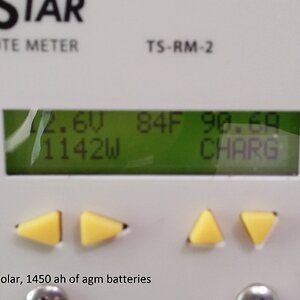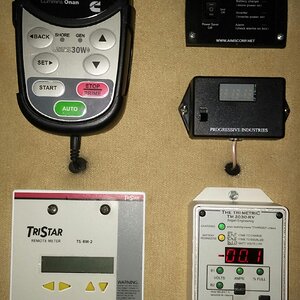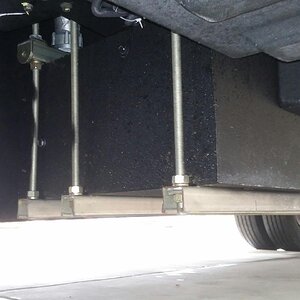This is a screenshot from the FCCC manual.
Preparation for Storage
When storing your recreational vehicle for an ex-
tended period of time (60 days or more), the follow-
ing steps should be taken to give it maximum protec-
tion. Note the date and mileage on the vehicle when
it is placed in storage.
• Fill the fuel tank and add a high-quality fuel
stabilizer to the fuel. Never store the vehicle
with a partially full tank of fuel.
• The cooling system was originally protected
with antifreeze to -34°F (-37°C). If colder tem-
peratures are expected, adjust the mixture. If
the coolant has been in the vehicle for five
years or 100,000 miles (160 900 km), flush the
cooling system and fill it with an appropriate
mixture of antifreeze and water, making sure
that the coolant contains a rust inhibitor.
• If it has been more than 18 months or 24,000
miles (38 616 km) since the transmission was
serviced, change the transmission fluid and
filter.
• Service the fuel filters.
• Run the engine until it is fully warmed up.
• Operate the air conditioning.
• If possible, store the vehicle in a dry, well ven-
tilated area, protected from sunlight.
• Check the tires for damage and set the tire
pressure to maximum as indicated on the side-
wall of the tire. Clean the tires using a mild
soap that would be used to clean the vehicle.
• If possible, raise the vehicle onto safety
stands. Do not store the vehicle on hydraulic
leveling jacks. Hydraulic jacks will bleed pres-
sure over time, lowering the coach back onto
the tires.
• Cover the tires to protect them from heat and
sunlight.
• If possible, release the parking brake.
• Remove and clean the battery. Always discon-
nect the negative cable first, then the positive
cable. Store the battery in a cool, dry place
and keep it charged.
• Lubricate all grease fittings on the chassis and
drivetrain.
• Cover all engine and transmission openings
with moisture-resistant tape.
Removal from Storage
Follow these steps when the recreational vehicle is
removed from storage.
• Remove the covers from the tires and thor-
oughly inspect the tires for damage. Inflate
them to the correct pressure for the actual
weight on the tires. Consult the Michelin or
Goodyear manual included with your chassis
for correct tire pressure. Weigh the vehicle if
you do not know how much it weighs.
• Check for fluid leaks. Repair as necessary.
• Change the engine oil and filter after extended
storage.
• Check the coolant level in the reservoir and
radiator. Add coolant if needed.
• Check the hydraulic fluid level in the reservoir.
Add fluid if needed.
• Check the engine belts for wear, damage, or
cracking.
• Check the engine fan for damage.
• Check the fuel/water separator. If it is empty,
prime the fuel system. For priming instructions,
see the Cummins Operation and Maintenance
Manual.
• Check the engine compartment for nesting ani-
mals. Check for leaks and damage to the
hoses and wiring.
• Check the rear axle lubricant level.
• Lubricate all grease fittings on the chassis and
drivetrain.
• Check the charge level of the battery. Clean
the ends of the battery cables. If the batteries
need to be replaced, install a clean and fully charged battery. Always connect the positive
cable first, then connect the negative cable.
Coat the battery terminals and connectors with
a dielectric protectant sealant.
• If the vehicle was stored on safety stands,
lower the vehicle at this time and set the park-
ing brake.
• Turn the ignition to the RUN position. Verify
that the fuel gauge and voltmeter are working
correctly.
• Run the engine until it is warm, then check
again for fluid leaks.












